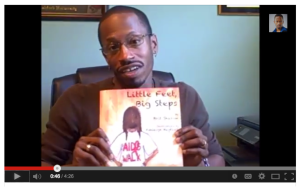How I Reinvented the Trash Can to Reflect Philosophical Principles of Deep Ecology
PHL 107 Final Project, Spring 2013

Deep Ecology
American society tends to value the environment only in so far as it has utility for human standards of living. Naess and Devall call this shallow ecology. For example, “We need to save the rainforest because it supplies oxygen for human life.” A more thoughtful way of approaching environmental issues is deep ecology, which assumes that human and nonhuman living things have value apart from their usefulness. For example, “We need to stop exploiting the rainforest because it is an ecosystem that has inherent value and in which living things depend on other living things.” Other principles of deep ecology especially relevant to my project include: humans do not have the right to reduce diversity and richness of the environment except to satisfy vital needs, and present human interference in the environment is excessive.
The Problem with Conventional Trash Cans
A magician came to my school when I was in third grade. He made a Pepsi bottle disappear. He said we probably thought that is what happens when we throw things away and went on to preach the importance of reduce, reuse, recycle. No one actually thinks trash just disappears. We know everything we throw away is going to a landfill or an ocean-fill, but we are out of touch with our environmental impact because we prefer the illusion of making things just go away. We hide things we want to get rid of in opaque containers hidden in our pantries or under counters, and then once a week we send it away on a big truck and go on with business. Trash cans serve as a means to an end of making things we don’t want anymore disappear. We – myself included – don’t understand our environmental impact because we separate ourselves from it. Quite literally, we don’t see it because we don’t want to. Trash cans have made it so easy to throw things away that almost everyone is guilty of discarding recyclables and compostables more or less often for the sake of convenience. The problem with trash cans is that they enable our disregard for the value of plant and wildlife affected by excessive amounts of trash. Fortunately, I have solved these problems without pretending that trash cans are a false need.
Features of the New and Improved Trash Can Design
The first redesign element is to make the trash can transparent. This enables me to see, and be reminded of everything I am throwing away. Sitting with my prototype, I am inspired to reflect on possibly better ways to dispose of a cheese puff and experience shame in the reminder that I was too lazy to recycle a few pieces of paper.
My new trash can has two equally accessible compartments – one for trash and one for compost. Even if I had a compost pile now, 2 out of my 3 roommates would object to keeping it in the kitchen. When I asked if they would participate in the composting if we had a trash can like my prototype, they both said yes. For the sake of simplicity, I did not include a compartment for recycling in the new trash can design. I believe that transparency is enough to discourage throwing away recyclable items. Currently, I only do not wash out cream cheese containers to recycle them when no one is around to watch me throw them away. It may even be enough incentive to go recycle things my city otherwise wouldn’t – like glass in Omaha.
Many of the best-selling trashcans are upwards of $60 on Amazon. They include fancy wheels, motion sensors, and deodorizers, which make the process of taking out the trash even easier and further separate people from their environmental impact. The upscale version of my redesigned trash can would have a reinforcement hologram of some ecosystem projected on the lid. The health and pleasantness of the ecosystem would be determined by the ratio of trash to compost. Ecological details (which baby animals and when) are beyond the scope of this project, but could be based on scientific processes and educational for kids and adults. Incentives for a low trash to compost ratio could be in the form of points or surprises, not unlike Farmville, or even fun facts like the number of puffins I saved that week by reducing the amount of my trash. More importantly, the hologram creates a visualization of placing my trash into some environment and has representative impact. Because of the way so many responded to Farmville, I think people would be more thoughtful about what they were throwing away if it affected the well being of even a digital ecosystem that they had assumed responsibility for. There is little incentive for cheating, and the intended market for this trash can has a genuine interest in improving their behavior.
Last but not least, conventional trash cans are kept in designated hiding places that many kitchens include intentionally. Typical trash can locations defeat the purpose of an otherwise conscious-shifting design if they still enable us to separate ourselves from the trash and impact we create. These new trash cans belong in central or at least open spaces, not unlike a conversation sparking piece of art.


